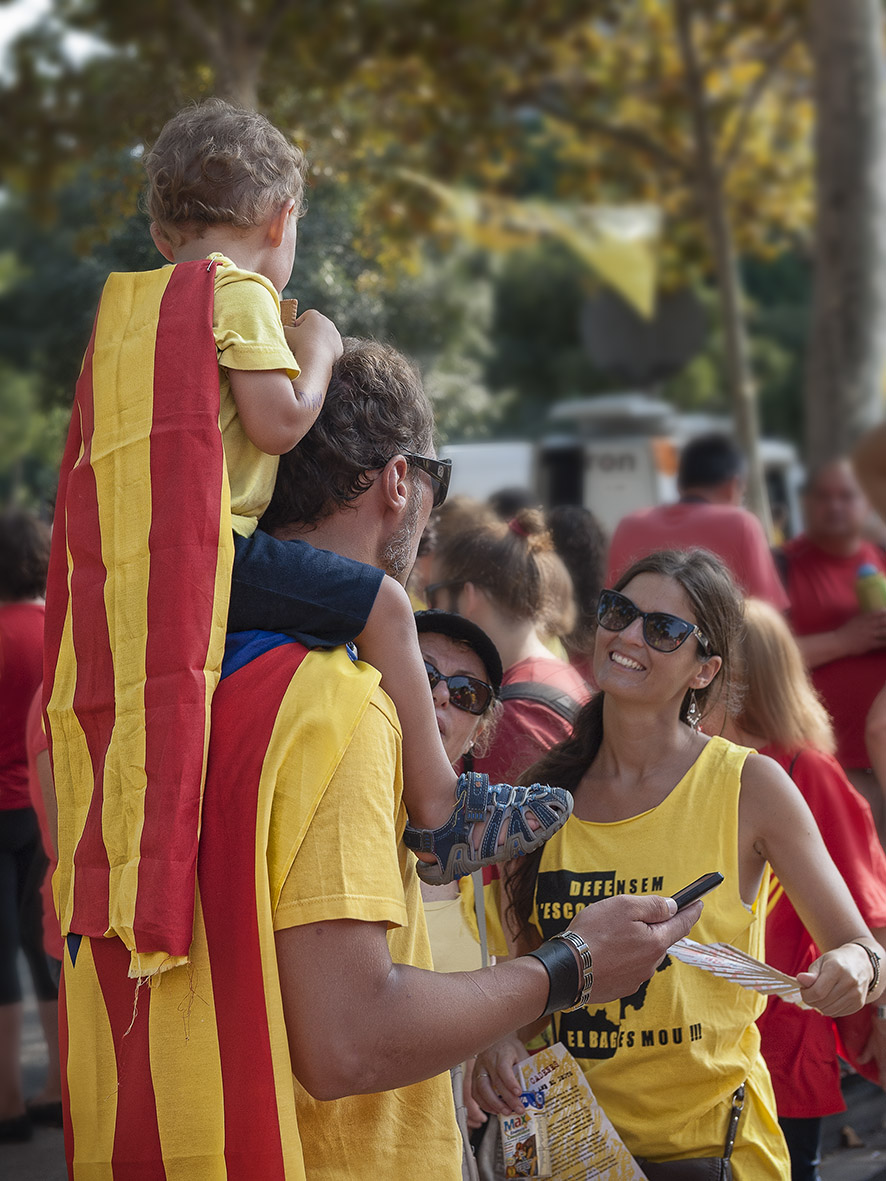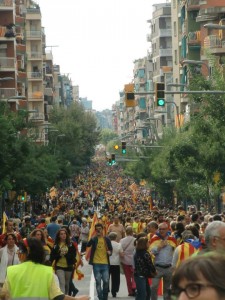The Catalan National Assembly is the grassroots, democratic, peaceful, self-funded, non-partisan movement that organized the 1.5 milion strong demonstration of September 11th 2012. It comprises more than 400 territorial assemblies and about 50 sectorial assemblies which articulate 30,000 people working selflessly for collective freedom throughout the country. We are Sants-Montjuïc per la Independència (Sants-Montjuïc for Independence; 2,600 activists in the neighborhood), a territorial assembly of the Catalan National Assembly in Barcelona (although the city is divided in 10 districts, there are 16 assemblies in the CNA). Since June 2011, we have been campaigning tirelessly in favor of independence.
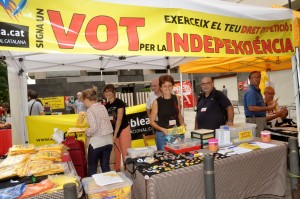
Campaign in our district together with other associations, on September 7th (Josep-Lluís Gonzàlez : Creative Commons by-sa)
Last year, we organized 151 stalls in the streets, lectures every month. Sants-Montjuïc per la Independència has been working for months on a new demonstration on September 11th, Catalonia’s National Day since 1714. The V for Voting demonstration in Barcelona will be 12 km long —you can compare it with some maps (14 cities you may know). 530,000 people previously enroled in it.
Also worth reading and surfing:
- The Catalan Way in Wikipedia (in 17 languages)
- Social support of Catalan independence
- Declaration of sovereignty and of the right to decide of the Catalan nation
- Association of Municipalities for Independence
- 1714-2014: Tricentenari Barcelona: a tribute to our old struggle for freedom
- Wilson Initiative: 6 academics from Columbia, Harvard, London School of Economics, Pompeu Fabra and Princeton share their knowledge about Catalonia
- Col·lectiu Emma: a network of Catalans and non-Catalans living in different countries who have made it their job to track and review news reports about Catalonia in the international media.
- Back to Barcelona, by American activist Liz Castro.
- Help Catalonia: A web denouncing the silent war Spain is waging against Catalonia.
- “The rise of secessionism in Catalonia has emerged out of the will to decide the region’s political destiny as a nation”, by Montserrat Guibernau in The London School of Economics and Political Science blog (May 2012)
- Mapping the Catalan elections results, by Vicent Partal (November 25 th 2012, video 10′ 11”)
- Hello, Europe!, a documentary (TV3, 76′ 01”)
- Diplocat: Public Diplomacy Council of Catalonia
- ElClauer.cat campaign: Keys on the independence of Catalonia
- You can follow us in English on Twitter: @IndySants. Our Twitter lists could be also useful for you: pro-independence, inbarcelona and catalanassembly.
- This site is written in Catalan, a Romance language like French, Italian, Portuguese, Romanian or Spanish.
CATALAN NATIONAL ASSEMBLY
The Catalan National Assembly program contains three points:
- The sovereignty of Catalonia resides in the people of Catalonia. The people of Catalonia are the one who must be consulted in order to decide which kind of political relationship they want to establish with other people and other states of the world.
- We are working to achieve that Catalonia becomes a new state in Europe.
- We are working together with all other political groups in the process of constitution of the new independent state to obtain the broader consensus and to become the State of all the Catalan people.
The Catalan National Assembly’s leader, Carme Forcadell, stated on August 23rd, on the 24th anniversary of the Baltic Way, that the day after the Catalan Way, the exact date and question for the self-determination vote should be announced. We are pushing to hold Catalonia’s self-determination vote before the end of September 2014, a week before the referendum in Scotland. However, the Spanish Government totally opposes Catalonia’s independence, its self-determination, and the organisation of a vote.

Catalan National Assembly’s president, Carme Forcadell
Who is Carme Forcadell? “Despite her relatively low profile, this former city councillor was central both to organising the local plebiscites and, as president of the new assembly, in planning the September rally. ‘Mas agreed with us that Catalans should decide whether we want our own state,’ Ms Forcadell told the FT in her home town of Sabadell, near Barcelona. PM Artur Mas later made the promise of an official referendum, she says, because the rally turnout, which she estimated at over a million and a half, was so formidable. ‘Our job now is to check that the next Catalan government delivers’.” (Julius Purcell, “The town that started Catalan deluge”. Financial Times, October 26 th 2012).
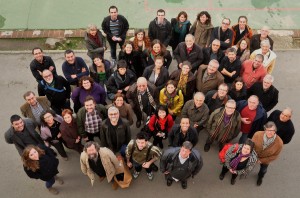
The Catalan National Assembly supported the agreement between Catalan parties on independence on December 19 th. This photo was taken in Sants on December 15th. It was made by Josep-Lluís Gonzàlez (Creative Commons by-sa)
FREQUENT PRO-INDEPENDENCE HASHTAGS, TRANSLATED IN ENGLISH
- #11s2014 = Sept 11th 2014
- #araeslhora = it’s time
ABOUT US
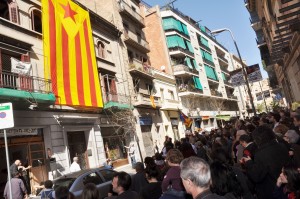
The Centre Social de Sants was an essential place in the antiFrancoism fight for freedom. It has the biggest permanent secessionist flag of Barcelona. Photo by Josep-Lluís González (CC by-sa)







